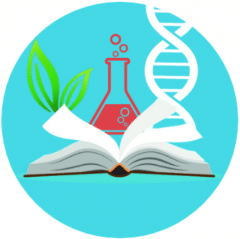Diversity of Organisms
Study Guide
Be able to:
|
Describe at least 3 alternatives to a five-kingdom taxonomic system. |
|
Explain Oparin and Haladane’s model of abiotic synthesis of organic molecules. |
|
Explain Miller and Urey’s model of abiotic synthesis of organic molecules. |
|
List the three main groups of archaeal bacteria, describe their distinguishing characteristics, and give an example of each group. |
|
Describe the four modes of bacterial nutrition, explain each mode, and give an example of a bacterium using each method. |
|
Describe three mechanisms used by motile bacteria to help them move and give an example of a bacterium that uses each method. |
|
Describe the structure and function of prokaryotic cell walls. |
|
Explain how prokaryotic flagella work and why they are not homologous to eukaryotic flagella. |
|
List characteristics that distinguish archaeal bacteria from other bacteria. |
|
Explain the differences among obligate aerobes, facultative anaerobes, and obligate anaerobes. |
|
List the five major groups of bacteria, describe their mode of nutrition, give some characteristic features and an example of each group. |
|
Explain how the organization of the prokaryotic genome differs from that of eukaryotic cells. |
|
Describe how the genus Streptomyces are commercially useful. |
|
Distinguish between endotoxins and exotoxins and give an example of a bacteria that produces each toxin. |
|
List Koch’s four postulates. |
|
Distinguish among these three symbiotic relationships — mutualism, commensalism, and parasitism. |
|
Explain how endospores are formed and why they are such a problem for the canning industry. |
|
What prokaryote is responsible for the most common sexually transmitted disease in the United States. |
|
List the major characteristics of protists. |
|
Compare the autogenous and endosymbiontic hypotheses for the origin of eukaryotes. |
|
Explain why protists are considered to be a polyphyletic group of organisms. |
|
Outline the life cycle of Plasmodium. |
|
Explain how accessory pigments are used to classify algae. |
|
Distinguish between macronuclei and micronuclei. |
|
List the five candidate kingdoms of protists and describe a major feature of each group. |
|
Tell the pigments, cell wall components, storage products, type of reproduction, habitat, and number & position of flagella for these algal groups — Dinoflagellata, Bacillariophyta, Chrysophyta, Phaeophyta, Rhodophyta, and Chlorophyta. |
|
List characteristics that distinguish fungi from other organisms in other kingdoms. |
|
Describe sexual and asexual reproduction in these fungal groups — Zygomycota, Ascomycota, and Basidiomycota. |
|
Compare the life cycles of cellular and plasmodial slime molds and tell a major difference between them. |
|
Explain why Deuteromycota are known as imperfect fungi. |
|
Describe the basic body plan of a fungus, |
|
Explain how fungi acquire nutrients. |
|
Describe the anatomy of lichens and tell how they reproduce and their ecological importance. |
|
Describe how the mutualistic relationship in Mycorrhizae is beneficial to both the fungus and the plant. |
